-
 Univers
Univers
-
 Ebooks
Ebooks
-
 Livres audio
Livres audio
-
 Presse
Presse
-
 Podcasts
Podcasts
-
 BD
BD
-
 Documents
Documents
-
- Cours
- Révisions
- Ressources pédagogiques
- Sciences de l’éducation
- Manuels scolaires
- Langues
- Travaux de classe
- Annales de BEP
- Etudes supérieures
- Maternelle et primaire
- Fiches de lecture
- Orientation scolaire
- Méthodologie
- Corrigés de devoir
- Annales d’examens et concours
- Annales du bac
- Annales du brevet
- Rapports de stage
La lecture à portée de main
Well seismic surveying and acoustic logging , livre ebook
140
pages
English
Ebooks
2018
Écrit par
Jean-Luc Mari Christophe Vergniault
Publié par
EDP Sciences
Obtenez un accès à la bibliothèque pour le consulter en ligne En savoir plus
Découvre YouScribe en t'inscrivant gratuitement
Découvre YouScribe en t'inscrivant gratuitement
140
pages
English
Ebook
2018
Obtenez un accès à la bibliothèque pour le consulter en ligne En savoir plus
Publié par
Date de parution
27 août 2018
Nombre de lectures
0
EAN13
9782759822638
Langue
English
Poids de l'ouvrage
13 Mo
Approaches that are typically applied in deep exploration geophysics, combining different seismic and logging methods, can be technically adapted for certain geotechnical or hydrogeological surveys or some site characterizations in the framework of seismic hazard studies. Currently it is entirely feasible to implement this type of geophysical surveying if the situation requires.
After reviewing the current state of knowledge regarding borehole measurements of subsurface shear velocities applied to the geotechnical field, this book illustrates the feasibility of carrying out vertical seismic profiles (VSPs) and logs in this field.
This approach also illustrates the value of combining velocity measurements of formations provided by borehole seismic tools (VSP) and acoustic (sonic) tools.
An innovative example of the application of borehole seismic and logging methods is then presented in the case study of a relatively near-surface (from 20 to 130 m) karst carbonate aquifer. It shows how a multi-scale description of the reservoir can be carried out by integrating the information provided by different 3D-THR surface seismic methods, full waveform acoustic logging, VSP with hydrophones, borehole optical televiewer and flow measurements.
In this book the authors provide readers with guidelines to carry out these operations, in terms of acquisitions as well as processing and interpretation. Thus, users will be able to draw inspiration to continue transferring petroleum techniques and other innovative methods for use in near-surface studies.
Publié par
Date de parution
27 août 2018
Nombre de lectures
0
EAN13
9782759822638
Langue
English
Poids de l'ouvrage
13 Mo
PROfle - Jean-Luc Mari and Christophe Vergniault
Well seismic surveying and acoustic logging
PROfle
Well seismic surveying
and acoustic logging
Jean-Luc Mari and Christophe Vergniault
PROfle
Approaches that are typically applied in deep exploration geophysics, combining different
seismic and logging methods, can be technically adapted for certain geotechnical or
hydrogeological surveys or some site characterizations in the framework of seismic hazard
studies. Currently it is entirely feasible to implement this type of geophysical surveying if
the situation requires.
After reviewing the current state of knowledge regarding borehole measurements of subsurface Well seismic shear velocities applied to the geotechnical field, this book illustrates the feasibility of
carrying out vertical seismic profiles (VSPs) and logs in this field.
This approach also illustrates the value of combining velocity measurements of formations surveying and
provided by borehole seismic tools (VSP) and acoustic (sonic) tools.
An innovative example of the application of borehole seismic and logging methods is then acoustic logging
presented in the case study of a relatively near-surface (from 20 to 130 m) karst carbonate
aquifer. It shows how a multi-scale description of the reservoir can be carried out by integrating
the information provided by different 3D-THR surface seismic methods, full waveform acoustic
logging, VSP with hydrophones, borehole optical televiewer and flow measurements.
In this book the authors provide readers with guidelines to carry out these operations, in Jean-Luc Mari and Christophe Vergniault
terms of acquisitions as well as processing and interpretation. Thus, users will be able to
draw inspiration to continue transferring petroleum techniques and other innovative methods
for use in near-surface studies.
978-2-7598-2263-8
Books of the PROfle collection are intended
for the transmission of professional knowledge
in different disciplines. They are written by
recognized experts in their felds and contribute
9782759 822621 www.edpsciences.org to the training and information of professionals.
9782759822638-COUV-Anglais.indd 1 02/07/2018 11:59Well seismic surveying
and acoustic logging
An overview of the current state
of knowledge in the geotechnical
field and possible methodology
transfers from the oil industry
to near surface studiesGÉ
OP
Q
HYSIQ
U
ALI
UE
APP
TÉ
LIQ
UÉE
Well seismic surveying
and acoustic logging
An overview of the current state
of knowledge in the geotechnical
field and possible methodology
transfers from the oil industry
to near surface studies
Jean-Luc Mari
Christophe VergniaultDOI: 10.1051/978-2-7598-2263-8
ISBN(ebook) : 978-2-7598-2263-8
This book is published in under Open Access Creative Commons License CC-BY-NC-ND
(https://creativecommons.org/licenses/by-nc-nd/4.0/en/) allowing non-commercial use,
distribution, reproduction of the text, via any medium, provided the source is cited.
© EDP Sciences, 2018Contents
Foreword 9
Introduction11Chapter1•Shear velocity measurement in boreholes 15
1.1 Context15
1.1.1 Overview of invasive and non-invasive V measurements 15s
1.1.2 Applications 17
1.1.3Environmental conditions18
1.2 V measurements by borehole seismic method 19s
1.2.1Downhole21
1.2.1.1The acquisition device21
1.2.1.2Analysis of a downhole (DH)26
1.2.1.3The specific example of offshore29
1.2.2 Uphole30
1.2.3 Crosshole 30
1.2.3.1Prerequisites31
1.2.3.2The acquisition device32
1.2.3.3Crosshole analysis36
1.3 V measurement by logging39s
1.3.1 Acoustic logging with high vertical resolution 39
1.3.2 PS Suspension Logging (PSSL) 41
5Well seismic surveying and acoustic logging
1.4 Case study of a downhole acquisition, PSSL and acoustic logging,
in the same borehole 44
1.5 Conclusion46
References47
Chapter2•Well seismic surveying49
2.1 Introduction49
2.2 Well seismic data acquisition53
2.2.1 Necessary resources for data acquisition 53
2.2.2 Implementation in the field53
2.2.2.1 Description of classical VSP operation
in a vertical well 53
2.2.2.2Well probes54
2.2.2.3Seismic source56
2.2.2.4Acquisition parameters56
2.2.2.5 Security57
2.2.2.6 Quality Control57
2.2.2.7 Production 57
2.3 Seismic waves57
2.4 Processing sequence62
2.5 Application with a geotechnical dataset71
2.6 Conclusion74
References 76Chapter3• Acoustic logging77
3.1Introduction77
3.2Acoustic logging data acquisition79
3.2.1 Necessary resources for data acquisition 80
3.2.2 Implementation in the field80
3.2.2.1 Description of an acoustic logging operation
in a vertical borehole80
3.2.2.2 Acoustic probes 81
3.2.2.3Acquisition and visualization parameters 84
3.2.2.4Acoustic logging in deviated well84
3.2.2.5Security84
3.2.2.6 Quality control84
3.2.2.7 Production84
3.3 Acoustic waves 85
3.4 Processing sequence88
6Contents
3.5 Acoustic imaging 91
3.5.1Refraction acoustic imaging91
3.5.2Reflection acoustic imaging95
3.6 Characterization of a formation using Stoneley waves 97
3.7 Conclusion100
References101
Chapter4•Tying surface seismic data 103
4.1 Introduction103
4.2 3D VHR seismic survey and VSP104
4.3 Acoustic logging 108
4.4 Acoustic logs109
4.5 Time conversion of acoustic logs and calculation of the synthetic
seismogram111
4.6 Integrated sonic time and VSP vertical time 113
4.7 Conclusion116
References116
Chapter 5 • Contribution of seismic and acoustic methods
to the characterization of karstic formations 117
5.1 Introduction 117
5.2Geological context118
5.33D seismic acquisition and processing 120
5.4Well seismic measurements124
5.5Monopole full waveform acoustic logging127
5.6Conclusion131
5.7Acknowledgements132
References132
Conclusion 135
7GÉ
OP
Q
HYSIQ
U
ALI
UE
APP
ÉT
ILQ
UÉE
1Foreword
J.-L. Mari, C. Vergniault
Based on their experience in geophysics applied to the oil and gas industry and the
geotechnical field, the authors have set out to explain how conventional approaches
used in deep exploration geophysics can be applied to certain geotechnical and
hydrogeological surveys, and site characterizations in the framework of seismic
hazard studies. After reviewing the current state of knowledge in the
geotechnical field regarding borehole measurements of subsurface shear velocities, the book
aims to illustrate the feasibility of carrying out vertical seismic profiles, logs and 3D
seismic reflection blocks. In addition to these examples, the authors have sought to
provide readers with guidelines to carry out these operations, in terms of
acquisition, as well as processing and interpretation.
The authors thank Françoise Coppens, Patrick Meynier and Gilles Porel for their
contributions to this book.
Many thanks to Jim Johnson and Katell Guernic from Tamarin
(www.tamarintext.com) for the English translation of the book
This chapter of Well seismic surveying and acoustic logging is published under Open Source Creative
Commons License CC-BY-NC-ND allowing non-commercial use, distribution, reproduction of
the text, via any medium, provided the source is cited.
© EDP Sciences, 2018
DOI: 10.1051/978-2-7598-2263-8.c001
9Well seismic surveying and acoustic logging
The authors
A graduate of the Institut Physique du Globe Strasbourg and IFP School (petroleum
geosciences, major in geophysics in 1978), Jean-Luc Mari was employed by IFP
Energies Nouvelles in 1979 as a research engineer in the Geophysics Department,
where he worked on several research projects, such as high-resolution seismic
surveying, reservoir monitoring, and the development of borehole tools, in
collaboration with industrial partners GdF-Suez, CGG, Total and ELF Aquitaine. In 1986,
he was seconded to ELF Aquitaine where he worked on reservoir geophysics. He
joined IFPEN in 1987 and was seconded to the Reservoir Department, where he
studied, in particular, the benefits of using geophysical methods in horizontal wells.
In 1994 he was appointed to IFP School as a professor and obtained the
accreditation to supervise research in earth sciences at the Université Pierre et Marie Curie.
Currently geophysics professor at IFP School, and an expert in geophysics for IFP
Energies Nouvelles, Jean-Luc Mari is a member of the EAGE. He is associate editor
for Near Surface Geophysics. In 2010, he received a Knighthood from the Ordre des
Palmes Académiques.
After gaining experience in various roles involving physical measurements,
Christophe Vergniault has worked as a geophysicist in the Geosciences Department
at EDF’s Industrial Division (EDF-DIPNN-DI-TEGG) for eight years. Trained as
a geophysics ingénieur (EOST) and with a geology degree from Montpellier
(master in advanced studies in structure and evolution of the lithosphere), he worked as
a geophysicist in a company specializing in offshore surveying (Géodia), as a
petrophysicist and wellsite geologist at Gaz De France (Exploration & Production and
underground storage department), and as physical measurement analyst for
inspecting EDF hydropower. The result of this accumulation of experiences is reflected in
this book through his outlook on geophysical measurements applied to the
geotechnical field.
10GÉ
OP
Q
HYSIQ
U
ALI
UE
APP
ÉT
ILQ
UÉE
2Introduction
J.-L. Mari, C. Vergniault
In the geophysics of oil exploration and reservoir studies, the seismic method is the
most commonly used method to obtain a subsurface model. This method plays an
increasingly important role in soil investigations for geotechnical, hydrogeological
and site characterization studies regarding seismic hazard issues (Mari et al, 1999).
The surface seismic method involves:
• Seismic refraction (P or S waves), which provides a subsurface velocity model.
This method, applied to P waves, is commonly used in the geotechnology field
to identify changes in the position of the bedrock, as well as longitudinal changes
of its physical state or that of its overburden (see AGAP’s Guide Sismique
réfraction, O. Magnin, Y. Bertrand, 2005).
• Seismic reflection, a type of two or three-dime

Ebooks
Guide des bonnes pratiques de physique médicale
Société Française de Physique Médicale

Ebooks
Medecine
Guide des bonnes pratiques de physique médicale
Société Française de Physique Médicale
275 pages
Français
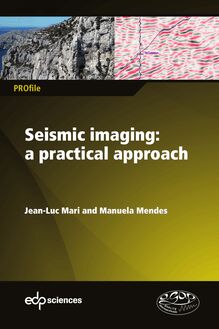
Ebooks
Seismic imaging: a practical approach
Jean-Luc Mari, Manuela Mendes

Ebooks
Techniques
Seismic imaging: a practical approach
Jean-Luc Mari, Manuela Mendes
208 pages
English
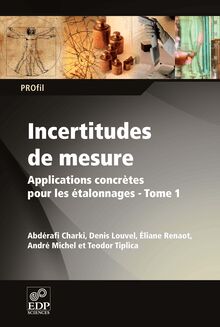
Ebooks
Incertitudes de mesures
Abdérafi Charki, Denis Louvel, Éliane Renaot, Michel Andre, Teodor Tiplica

Ebooks
Sciences formelles
Incertitudes de mesures
Abdérafi Charki, Denis Louvel, Éliane Renaot, Michel Andre, Teodor Tiplica
149 pages
Français

Ebooks
Techniques d’optimisation Tome 1
Max Cerf

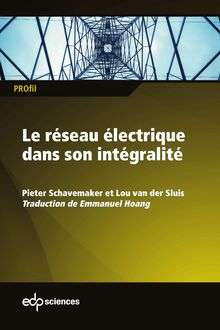
Ebooks
Le réseau électrique dans son intégralité
Pieter Schavemaker, Lou Van der Sluis, Emmanuel Hoang

Ebooks
Techniques
Le réseau électrique dans son intégralité
Pieter Schavemaker, Lou Van der Sluis, Emmanuel Hoang
434 pages
Français

Ebooks
Microbiologie des carburéacteurs
Gérard Dallemagne

Ebooks
Sciences formelles
Microbiologie des carburéacteurs
Gérard Dallemagne
270 pages
Français
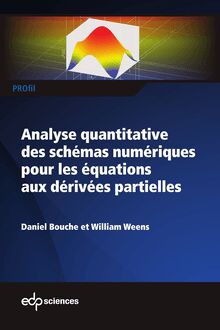
Ebooks
Analyse quantitative des schémas numériques pour les équations aux dérivées partielles
William Weens, Daniel Bouche

Ebooks
Sciences formelles
Analyse quantitative des schémas numériques pour les équations aux dérivées partielles
William Weens, Daniel Bouche
250 pages
Français
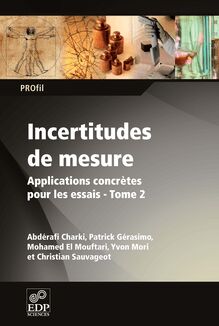
Ebooks
Incertitudes de mesures
Abdérafi Charki, Patrick Gérasimo, Mohamed El Mouftari, Yvon Mori, Christian Sauvageot

Ebooks
Sciences formelles
Incertitudes de mesures
Abdérafi Charki, Patrick Gérasimo, Mohamed El Mouftari, Yvon Mori, Christian Sauvageot
143 pages
Français
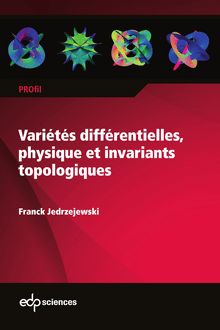
Ebooks
Variétés différentielles, physique et invariants topologiques
Franck Jedrzejewski

Ebooks
Sciences formelles
Variétés différentielles, physique et invariants topologiques
Franck Jedrzejewski
374 pages
Français
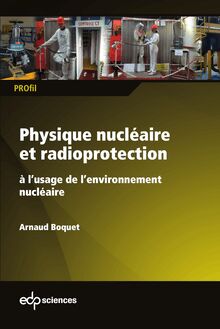
Ebooks
Physique nucléaire et radioprotection
Arnaud Boquet

Ebooks
Sciences formelles
Physique nucléaire et radioprotection
Arnaud Boquet
505 pages
Français

Ebooks
Introduction à l'ingénierie des installations nucléaires
Georges Sapy

Ebooks
Sciences formelles
Introduction à l'ingénierie des installations nucléaires
Georges Sapy
299 pages
Français
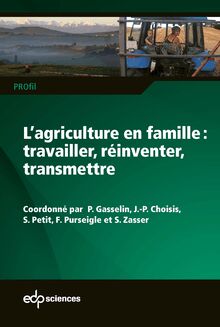
Ebooks
L’agriculture en famille : travailler, réinventer, transmettre
Benoît Dedieu

Ebooks
Science de la nature
L’agriculture en famille : travailler, réinventer, transmettre
Benoît Dedieu
4 pages
Français
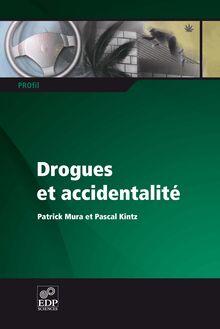
Ebooks
Drogues et accidentalité
Patrick Mura et Pascal Kintz


Ebooks
Traitements de surface des matériaux par voie humide
Michel Ruimi

Ebooks
Techniques
Traitements de surface des matériaux par voie humide
Michel Ruimi
422 pages
Français
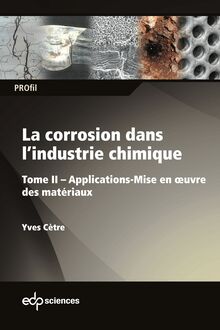
Ebooks
La corrosion dans l’industrie chimique
Yves Cètre

Ebooks
Sciences formelles
La corrosion dans l’industrie chimique
Yves Cètre
227 pages
Français
-
 Univers
Univers
-
 Ebooks
Ebooks
-
 Livres audio
Livres audio
-
 Presse
Presse
-
 Podcasts
Podcasts
-
 BD
BD
-
 Documents
Documents
-
Jeunesse
-
Littérature
-
Ressources professionnelles
-
Santé et bien-être
-
Savoirs
-
Education
-
Loisirs et hobbies
-
Art, musique et cinéma
-
Actualité et débat de société
-
Jeunesse
-
Littérature
-
Ressources professionnelles
-
Santé et bien-être
-
Savoirs
-
Education
-
Loisirs et hobbies
-
Art, musique et cinéma
-
Actualité et débat de société
-
Actualités
-
Lifestyle
-
Presse jeunesse
-
Presse professionnelle
-
Pratique
-
Presse sportive
-
Presse internationale
-
Culture & Médias
-
Action et Aventures
-
Science-fiction et Fantasy
-
Société
-
Jeunesse
-
Littérature
-
Ressources professionnelles
-
Santé et bien-être
-
Savoirs
-
Education
-
Loisirs et hobbies
-
Art, musique et cinéma
-
Actualité et débat de société
- Cours
- Révisions
- Ressources pédagogiques
- Sciences de l’éducation
- Manuels scolaires
- Langues
- Travaux de classe
- Annales de BEP
- Etudes supérieures
- Maternelle et primaire
- Fiches de lecture
- Orientation scolaire
- Méthodologie
- Corrigés de devoir
- Annales d’examens et concours
- Annales du bac
- Annales du brevet
- Rapports de stage





